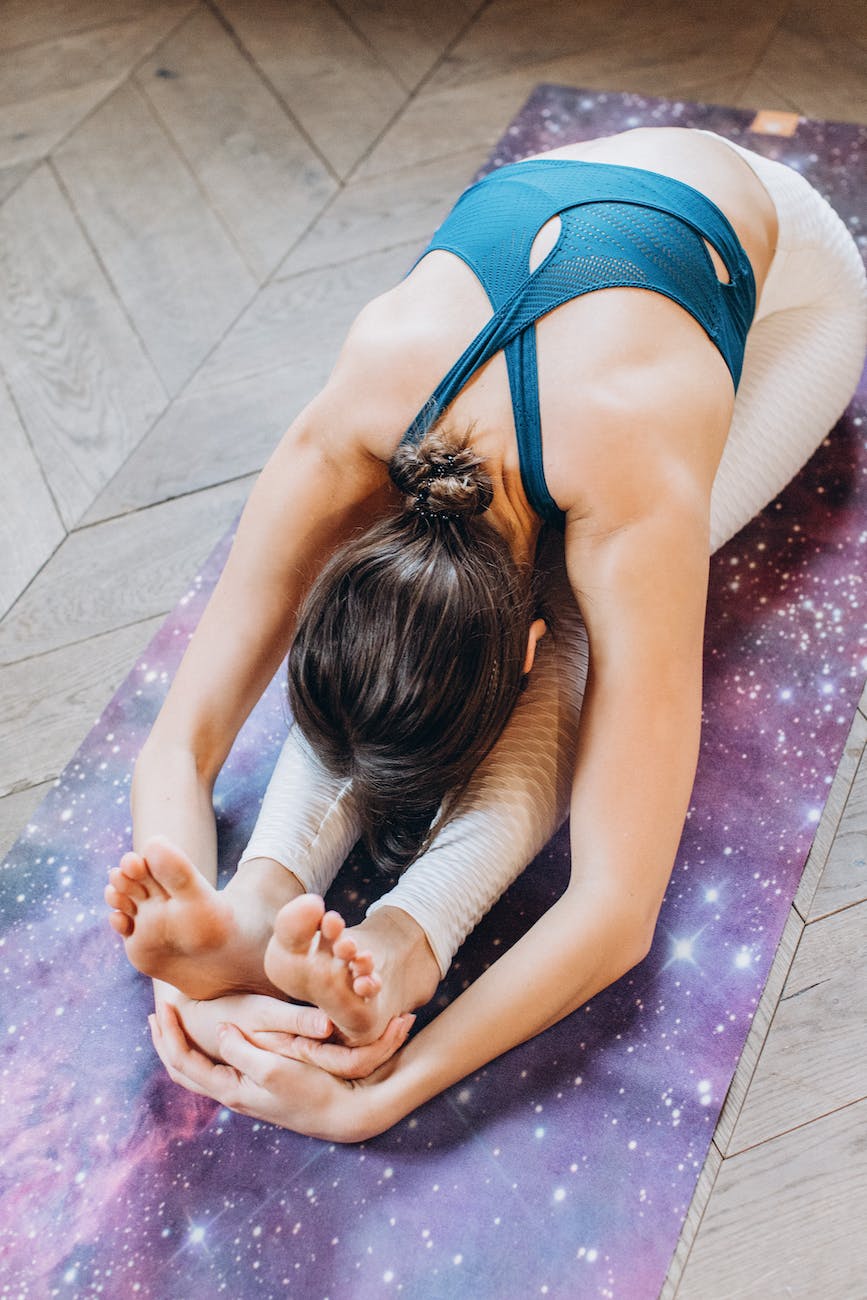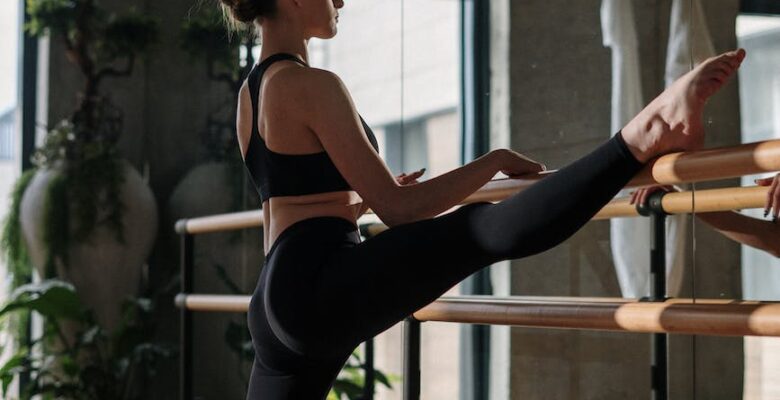The fundamental difference between static and dynamic stretching is the amount of movement required — or lack thereof.
Unless you’re a warm-up nerd, your pre-workout routine may consist of a jumble of stretches that take less than a minute to complete. Touch your toes for around 15 seconds, then do a few high knees and a few breaths of a quad stretch before hopping on the treadmill or picking up the barbell.
However, not all stretches are made equal, and you may want to reconsider your stretching practice. The cause is as follows: Each stretch is classified as either dynamic or static, and the one you choose to do before a workout and on recovery days can have an impact on your performance and muscle health.
Here, a fitness and recovery specialist talks down static vs. dynamic stretching, including what each style requires and when to exercise them. You’ll also discover static and dynamic stretches that are worth implementing into your recuperation program.
Explained: Static vs. Dynamic Stretching
A static stretch involves keeping a precise position that causes muscle tension and a “stretching” sensation, whereas a dynamic stretch involves moving a limb over its full range of motion.
Static stretching helps to relieve any tightness, which can lead to muscle aches and pain if left untreated because you are holding the stretched position for a long period of time.
A dynamic stretch, on the other hand, is where you’re releasing and then engaging again without holding the positions too long.
The main goal is to get the blood flowing, oxygen moving through the body, and increase mobility. And joint mobility, or the capacity of a joint to move through its whole range of motion without pain or compensation, is critical: According to the American Council on Exercise, a lack of mobility can lead to movement compensations (using the wrong muscles to make a move), which can lead to muscular imbalances and an increased risk of injury.

The length of time spent on each stretch varies as well. A static stretch might last anywhere from one to three minutes. When you’re trying to release a muscle, knot, or whatever it is, that time is much more important.
A dynamic stretch, on the other hand, involves moving through a movement for 30 to 45 seconds, which helps “wake up” your body.
When Should You Use Static vs. Dynamic Stretching?
You should perform a dynamic stretching program before exercising. Performing dynamic stretching before a workout. This will prevent injuries during your workout.
Experts recommend performing both static and dynamic stretching before a workout increases the joint range of motion; the improvement with static stretches may be due to an increased tolerance to stretching rather than reduced muscle tension.
Furthermore, research suggests that performing static stretching just before exercise may reduce muscular strength and performance in running and jumping.
Static stretching should be reserved for recuperation days rather than cool-down days. Practicing static stretching immediately after your workout might not give you many benefits. You will feel a little bit of something right away. However, it might not do much in terms of long-term benefits.
Stretching exercise should be in your workout regime. Perhaps you can do these exercises on your recovery day.
When introducing dynamic stretches into your pre-workout routine, experts recommend mimicking the motions you’ll be doing in your real training session. If you’re ready to start a lower-body workout that needs a lot of hip and glute movement, they recommend focusing on dynamic stretches that enhance hip mobility (like fire hydrants and leg swings) and activate the glutes (like bridges and frog pumps).
Whether you’re doing dynamic or static stretching, use your breath to your advantage. Especially practice long exhales throughout a release. It helps with releasing tensions.
Static Stretches
Child’s Pose
A. Sit comfortably in your heels.
B. Roll your torso forward, maintaining your hips on your heels, and lay your forehead on the floor.
C. Lower your chest as near to your knees as possible while extending your arms in front, palms down. Inhale and exhale slowly.
For 1 minute, hold.
Seated Twist
A. Sit up straight on the floor, legs outstretched, and hands on thighs.
B. Bend the left knee and pass the left foot over the outside of the right thigh.
C. Bend the right knee and place the right ankle next to the left glute, keeping the left knee pointing to the ceiling and the hips square.
D. Extend your left arm behind your body and lay your fingertips on the floor behind your hips, gently turning your body to the left and right.
E. Press the right elbow on the right elbow knee, inhale, then exhale while turning to the right.
For 1 minute, hold. Repeat on the other side.
Seated Forward Fold
A. Sit with your legs out in front of you, softly pressing your hip bones into the floor. Pull the lower belly button up and in.
B. Extend spine on inhale. Hinge at the hips and fold forward while exhaling while keeping your back straight.
Hold for 1 minute.

Pigeon Stretch
Slide your left shin toward the front of the mat from downward dog, putting your left knee behind the left wrist and left ankle behind the right wrist. Keep your left shin parallel to the top of your mat and your left knee outside of your left hip.
B. Walk your right leg back as far as you can, untucking your toes and pressing the top of your right foot onto the floor. Keep your hands in front of you on the floor in front of your torso, and relax your shoulders by bringing your shoulders down and away from your ears.
For 1 minute, hold.
Seated Reverse Shoulder Stretch
A. Sit comfortably in your heels.
B. Clasp both hands and interlock fingers behind the back near the buttocks, palms facing each other.
C. With your back straight and your shoulder blades together, gently press your arms out from your body.
For 1 minute, hold.
Dynamic Stretches You Should Try
Wall Walkouts
A. Stand with your feet shoulder-width apart and your hands at your sides. Hinge at the hips to fold forward, hands to the floor (knees if necessary).
B. Keeping your core strong and your legs straight, walk your hands forward into a high plank position. Lower your hips to the ground and slowly bend your upper body back.
C. Return to a high plank by lifting hips and walking hands back toward feet. Return to the beginning posture by rolling up one vertebra at a time.
Repeat for 45 seconds.
Runner’s Lunge with Reach
A. Begin on the floor in a table-top position with hands under shoulders. Have your feet apart about a foot with your knees bent and stacked directly under your hips.
B. Raise both knees off the floor and straighten your legs to form a high plank position on your palms, squeezing your glutes together and engaging your core. From your head to your toes should be in a straight line by actively pushing away from the floor.
C. Take a lunge with your right foot on the floor next to your right pinky finger. Relax and drop your hips and back toward the floor.
D. Press into your left palm and raise your right arm to the ceiling, gazing at your fingertips to open your chest. Hold for one full breath.
E. Return to a high plank position by lowering your right arm to the floor and stepping back with your right foot. Rep the movement on the other side.
Repeat for 45 seconds on each side.
Standing Crossbody Hamstring Stretch
A. Stand with your feet shoulder-width apart and your arms at your sides at shoulder height.
B. Keeping your legs straight, pivot at the hips and reach your left hand to your right foot. Return to standing by reversing the movement, then hinge your hips and reach your right hand to your right foot.
Repeat for 45 seconds on each side.
Dynamic Neck Stretching
A. Sit cross-legged on the floor, hands on top of knees.
B. Raise your right arm upward and lay your right hand on your left ear.
C. Gently and slowly tilt your head to the right, applying light pressure. Hold for two full breaths before releasing your hand from your ear and dropping your arm back to your knee.
Repeat for 45 seconds on each side.
To Conclude
It’s crucial to learn to listen to your body and distinguish between a stretch that hurts a lot and one that’s genuinely hurting you. In general, a good-feeling stretch will not feel sharp or shooting — that’s usually a bad sign. If you feel a jolt in your tendons or muscle areas, don’t go any further; stop where you are and take it super-duper easy and move slowly.
However, if you notice some controllable tightness, try using your breath to gently push 10 to 15% deeper into the stretch. Take notice of how you’re feeling as you go, and if it feels comfortable, stay there.
